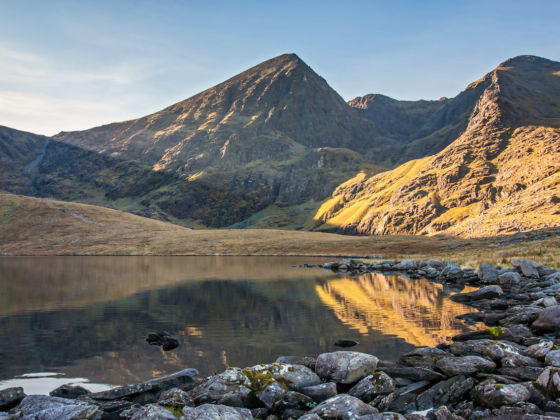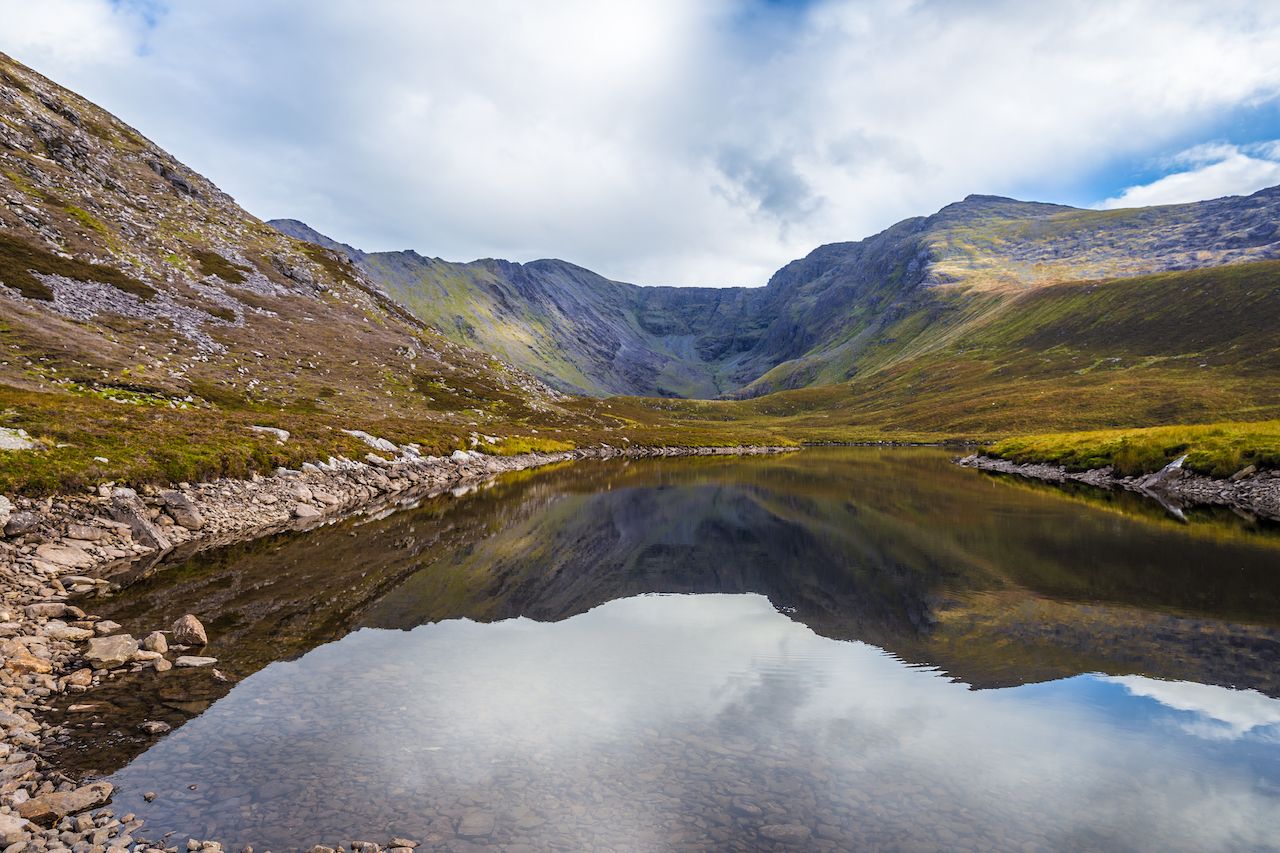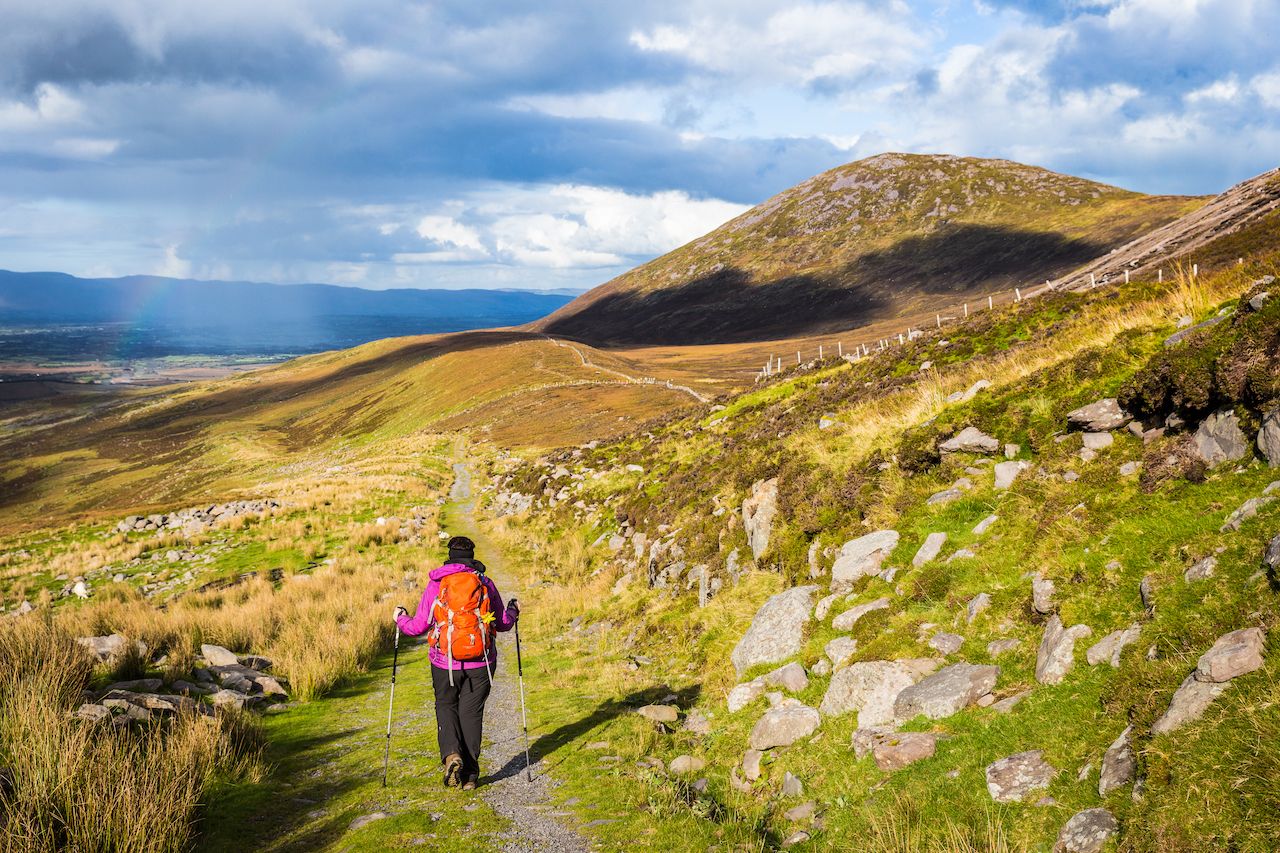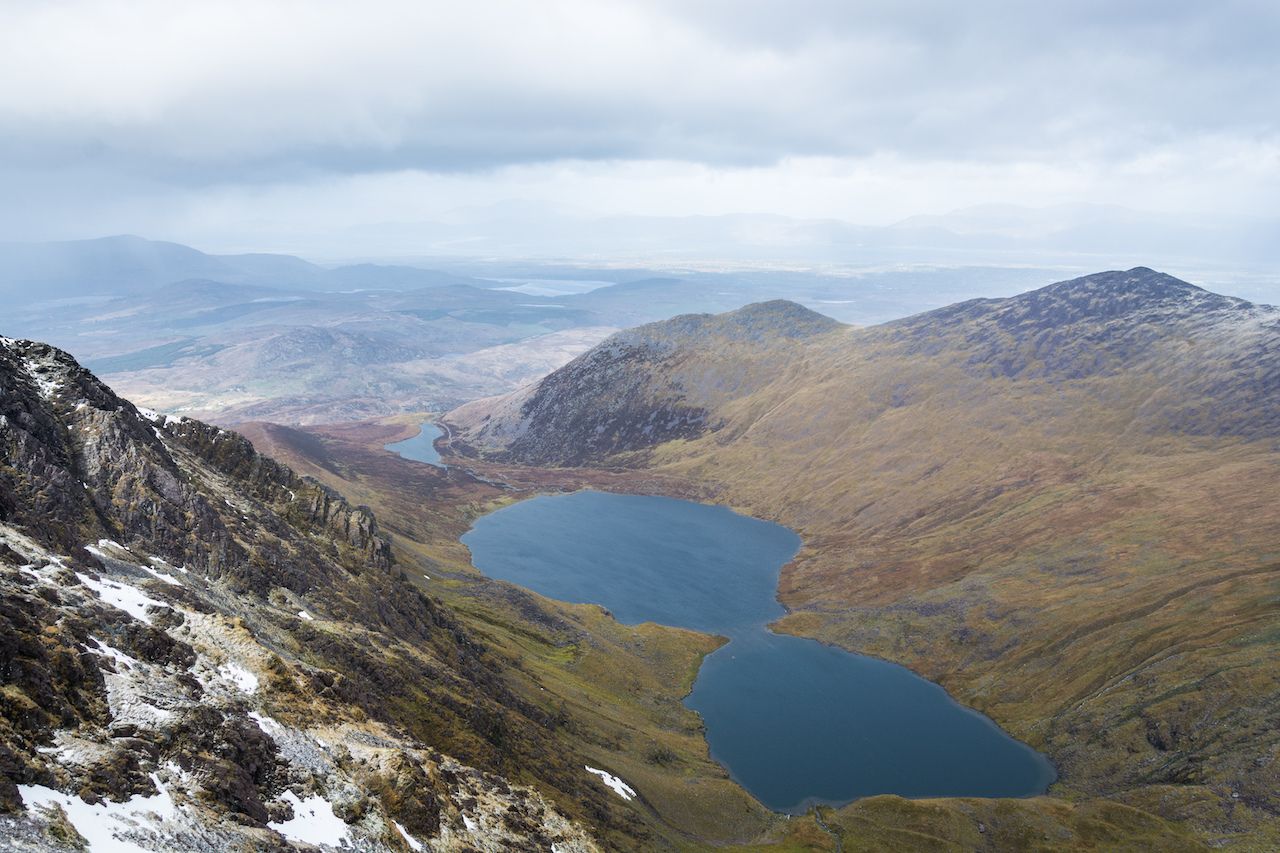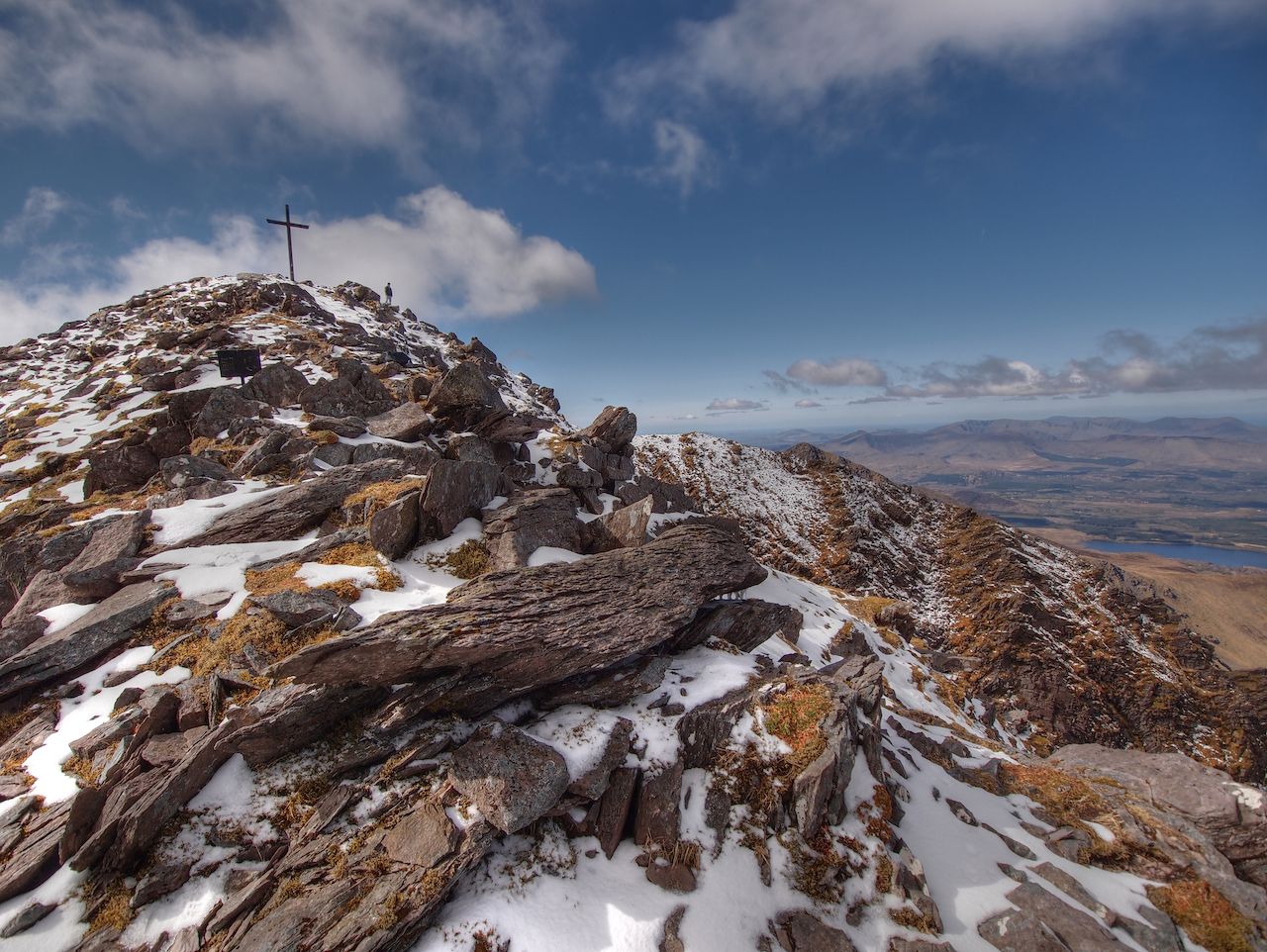Despite the changeable weather, Ireland is a great destination for those who like to spend time outdoors rather than in pubs or whiskey distilleries. In recent years, the country has developed cycling routes such as the Great Western Greenway, which follows the Atlantic coast along Clew Bay in County Mayo; surfers flock to exhilarating waves in towns like Bundoran, off the northwest coast; and there are hiking trails to tackle in nearly every part of the island.
Carrauntoohil (pronounced car-awn-too-hill) is the country’s highest peak and biggest challenge for hiking enthusiasts. With multiple routes to choose from and difficult conditions at any time of year, climbing Carrauntoohil is a challenge — but it’s very much worth it. And since Ireland’s outdoor adventure opportunities are still relatively under the radar for international visitors, you could even have the whole place all to yourself.
